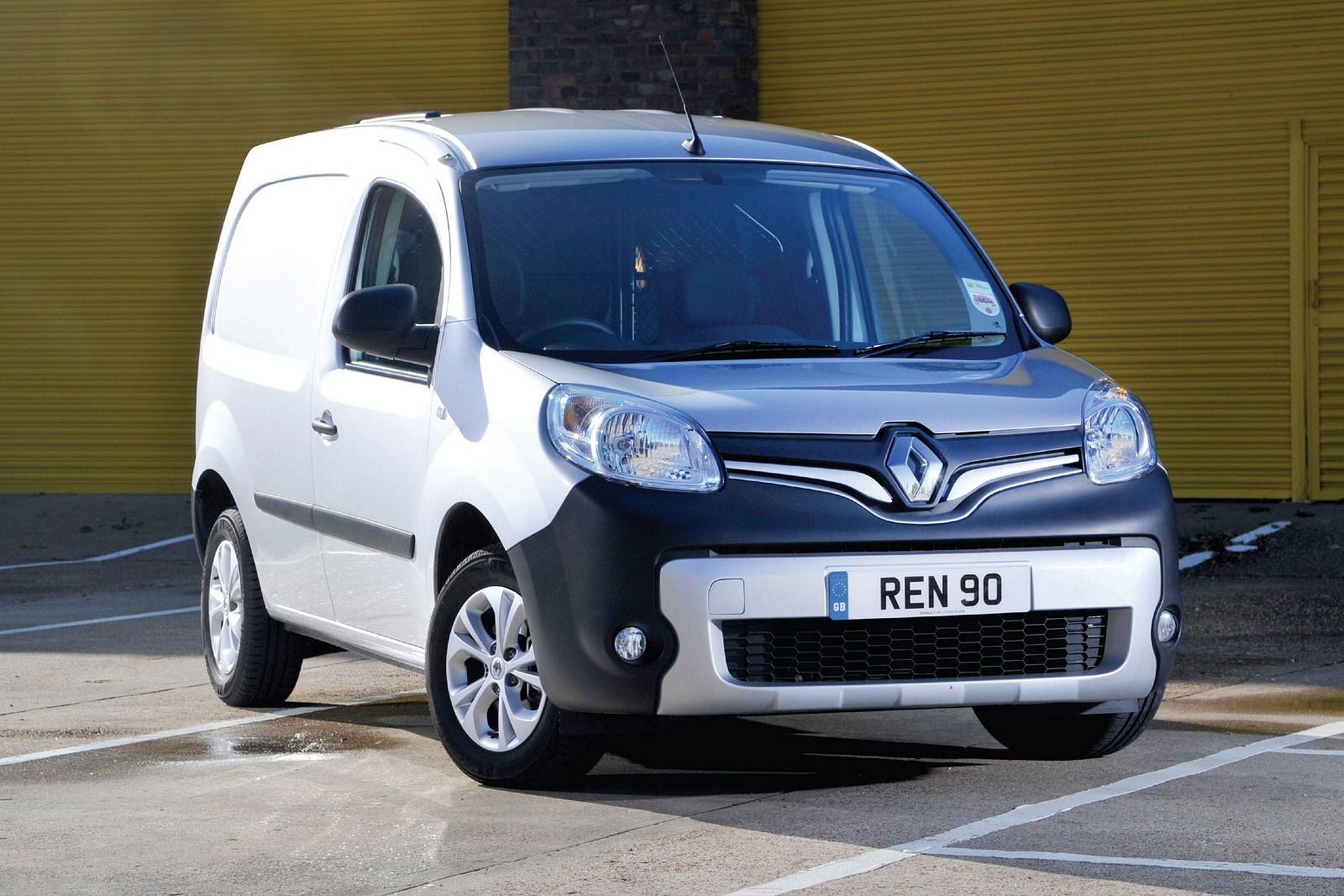The Renault Kangoo van has carved out a profitable niche for itself as an inexpensive city van that won’t let operators down. Here’s how to track down a used example.
The Kangoo’s blocky shape affords masses of room for front-seat passengers, the high ceiling creates an airy feel to the cabin and the basic dashboard design is lifted wholesale from the MK2 Scenic MPV with its two-tone finish, handle-style handbrake designed to minimise strain on the wrist and dash-mounted gear lever.
Certainly, by the standards of the compact van market, quality of fit and finish is pretty good. The upright driving position also facilitates easy entries and exits.
An enormous amount of headroom is present in the front of the Kangoo, enough so that all kinds of elaborate headgear could be accommodated should the occasion arise. The Kangoo comes with ABS with EBD, six load-anchorage points, remote-control central locking, full steel bulkhead, overhead storage shelf, driver’s-side airbag, height-adjustable seatbelts and steering wheel. Choose the top-of-the-range ML+ and you also get a nearside side-loading door and ESP+.
As with all vans, the price asked is a bit of a lottery given the wildly varying mileages and conditions you’ll happen upon. You can pick up a tidy 2011 model Kangoo ML19 67 dCi with less than 100k on the clock for around £3,000 plus VAT and the extra lugging power of the 85 engine shouldn’t cost a great deal more. The Z.E. electric models are still very rare on the used market.
The Kangoo is a tough thing that can shrug off most of what even the most careless city driver will throw at it. It does ride lower than the original Mk1 and there’s no all-wheel-drive model, so it’s not quite so clever on really bad surfaces. Check for crash damage, uneven tyre wear, kerbed alloys, parking dents, ripped or discoloured upholstery and make sure the electrical features such as central locking and sunroofs work as expected.
At the wheel of a Kangoo, you sit very upright and the huge glass area gives an excellent view ahead. On country roads, there’s actually a reasonable amount of grip, while in town, light power steering makes it easy to slot into tight spaces, although – until you get used to the shape – judging the extremities of the car during parking manoeuvres can be slightly difficult as the bonnet slopes away from you.
Performance is leisurely, with even the fastest petrol and diesel models taking around 13s to reach 60 from rest on the way to 106mph. At least with the diesel, there’s the compensation of prodigious torque – 177lb/ft of it if you go for the 103bhp version, compared with just 136lb/ft for the equivalent petrol unit. That means fewer gear changes for diesel drivers and a much more leisurely feel.
The Z.E. feels extremely rapid off the line, although on longer journeys a heavy right boot will see the range come right down. Mind you, if you prod the eco button, the torque output is restricted to improve the range by around 10%. Renault claims a range of 106 miles and its research shows 70% of van drivers cover less than 62 miles in a day. So the Z.E. might well work for you.
The Renault Kangoo van has more than deserved the success it has enjoyed. The later models are better finished than before and the addition of the Z.E. model has been a bold move. Although the Z.E. is still very rare as a used buy, your Renault dealer might well be able to point you in the right direction. If you can score a deal on one of these, you’ll have a really future-proofed van that is surprisingly simple under the skin.
